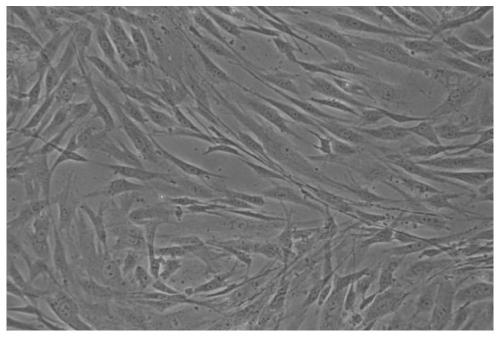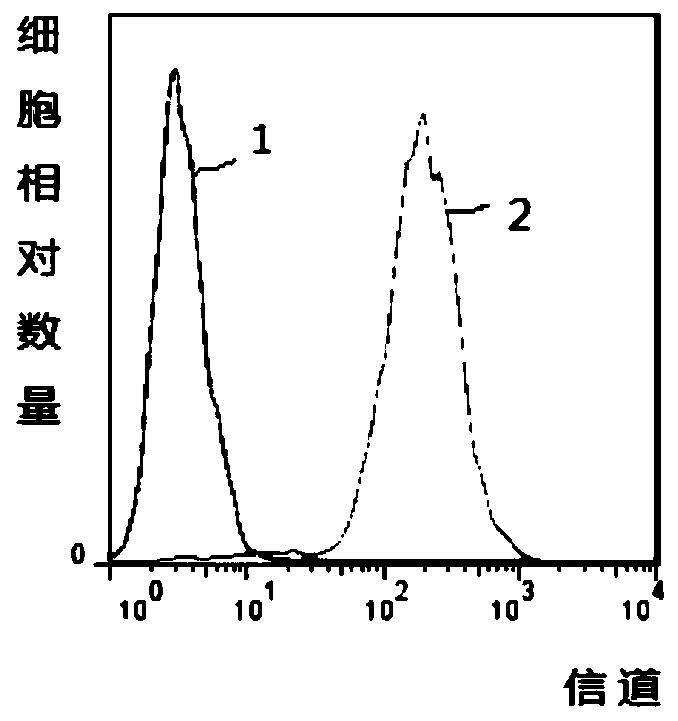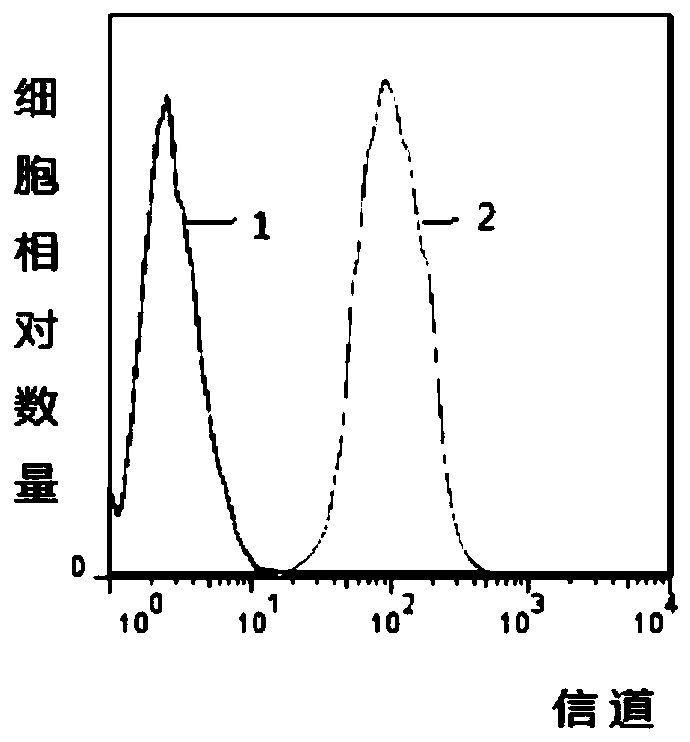Culture and cryopreservation method of amniotic mesenchymal stem cells
A technology of amniotic mesenchymal stem cells and culture methods, applied in the field of culture and cryopreservation of amniotic mesenchymal stem cells, can solve the problems of long operation time, low yield, complicated process, etc., achieve good repeatability and increase yield , the effect of effective separation
- Summary
- Abstract
- Description
- Claims
- Application Information
AI Technical Summary
Problems solved by technology
Method used
Image
Examples
Embodiment 1
[0035] This embodiment provides a method for culturing amniotic mesenchymal stem cells, comprising the following steps:
[0036](1) Separation of amniotic membrane tissue: Soak the taken placental tissue in PBS buffer solution, sample blood water as the sample source microbial detection sample, then soak the placental tissue for 2 minutes, and then soak the placental tissue in 75% alcohol for about 1 minute, and use After washing the placental tissue repeatedly with normal saline, the amniotic tissue was gently torn off with tissue forceps, soaked in PBS, and used for the separation of amniotic mesenchymal stem cells, and the normal saline that washed the placenta was finally sampled to detect microorganisms;
[0037] (2) Isolation of amniotic membrane mesenchymal stem cells: cut the amniotic membrane tissue into 1-2mm 2 Add small pieces into a 50mL sterile centrifuge tube, and add an equal volume of mixed enzyme digestion solution (dissolve neutral protease, deoxyribonuclease...
Embodiment 2
[0045] This embodiment provides a method for culturing amniotic mesenchymal stem cells, comprising the following steps:
[0046] (1) Separation of amniotic membrane tissue: Soak the taken placental tissue in PBS buffer, sample blood water as the sample source microbial detection sample, then soak the placental tissue for 3 minutes, then soak the placental tissue with 75% alcohol for about 2 minutes, and use After washing the placental tissue repeatedly with normal saline, the amniotic tissue was gently torn off with tissue forceps, soaked in PBS, and used for the separation of amniotic mesenchymal stem cells, and the normal saline that washed the placenta was finally sampled to detect microorganisms;
[0047] (2) Isolation of amniotic membrane mesenchymal stem cells: cut the amniotic membrane tissue into 1-2mm 2 Add small pieces into a 50mL sterile centrifuge tube, and add 0.8 times the volume of amniotic membrane tissue mixed enzyme digestion solution (dissolve neutral protea...
Embodiment 3
[0055] This embodiment provides a method for culturing amniotic mesenchymal stem cells, comprising the following steps:
[0056] (1) Separation of amniotic membrane tissue: Soak the taken placental tissue in PBS buffer solution, take a sample of blood and water as the sample source microbial detection sample, then soak the placental tissue for 3 minutes, and then soak the placental tissue with 75% alcohol for about 2 minutes, and use After repeatedly washing the placental tissue with normal saline, gently tear off the amniotic membrane tissue with tissue forceps, soak it in PBS, and use it for the separation of amniotic mesenchymal stem cells, and take samples of the normal saline that rinses the placenta at the end to detect microorganisms;
[0057] (2) Isolation of amniotic membrane mesenchymal stem cells: cut the amniotic membrane tissue into 1-2mm 2 Add small pieces into a 50mL sterile centrifuge tube, and add 1.2 times the volume of amniotic membrane tissue mixed enzyme d...
PUM
 Login to View More
Login to View More Abstract
Description
Claims
Application Information
 Login to View More
Login to View More - R&D
- Intellectual Property
- Life Sciences
- Materials
- Tech Scout
- Unparalleled Data Quality
- Higher Quality Content
- 60% Fewer Hallucinations
Browse by: Latest US Patents, China's latest patents, Technical Efficacy Thesaurus, Application Domain, Technology Topic, Popular Technical Reports.
© 2025 PatSnap. All rights reserved.Legal|Privacy policy|Modern Slavery Act Transparency Statement|Sitemap|About US| Contact US: help@patsnap.com



